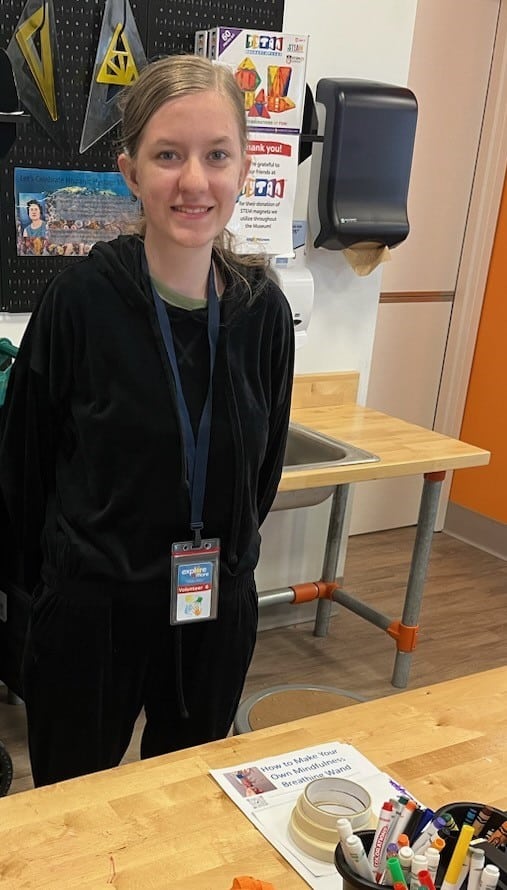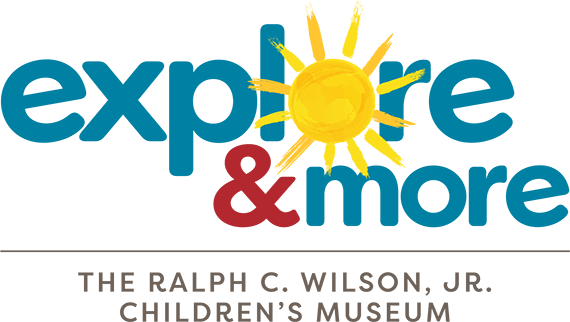By Silvia Steele

This month I want to highlight one of Explore & More’s wonderful volunteer interns, Briona. She has been a familiar face at the museum since September, the beginning of her senior year at St. Mary’s School for the Deaf. As part of her internship, she assisted educators with STEM activities in the Tinkering Tank, prepped and facilitated art activities in the Art Studio and engaged with visitors throughout the museum.
I asked her a few questions about her time at Explore & More and about what she wants people in the community to know about being deaf/hard of hearing. “I enjoyed volunteering at Explore & More. It has been a great opportunity to work with children. My favorite STEM activity was teaching kids how to use Scribble-bots. People should know that for deaf/hard of hearing students, there are many ways for us to communicate with our peers. After graduation I will be attending Rochester Institute of Technology- National Technical Institute for the Deaf, majoring in digital media.” Briona is graduating this month and will be missed by our entire team.
Deaf & Hard of Hearing Awareness Facts and Resources
- “Hearing challenges affect all ages, races, and ethnicities, from the entire spectrum of socioeconomic and geographic backgrounds. Some people were born deaf, some lost hearing as a result of a medical condition, illness, time, or trauma. Some hear a little with the support of a cochlear implant or hearing aid. Some can’t hear anything at all. In fact, the abilities and needs of those with hearing disabilities are as diverse as the community itself.” Click here to read the entire article.
- According to the CDC about 2 to 3 out of every 1,000 children in the United States are born with a detectable level of hearing loss in one or both ears.
- “ASL is a language completely separate and distinct from English. It contains all the fundamental features of language, with its own rules for pronunciation, word formation, and word order. ASL classes have become much easier to access both in person and on-line.
- There are many forms of assistive technology for people who are deaf or hard of hearing: hearing aids, FM systems, on-screen captioning, TTY (Text Telephone or teletypewriter), audio loop systems, text messaging, telephone amplifiers, flashing and vibrating alarms, infrared listening devices, and portable sound amplifiers. Some people choose surgical technology such as cochlear or brainstem implants, and bone-anchored hearing aids. Click here to read more.
- Checklist of hearing and communication development- ages birth-4
- Deaf Access Services responds to the interests of Deaf and Hard of Hearing individuals by promoting communication access, awareness, and opportunities in the greater community. Resource for online ASL classes and interpreters.
- St. Mary’s School for the Deaf serves the Deaf and Hard of Hearing Community from all eight counties of Western New York.
- The American Society for Deaf Children (ASDC) is committed to empowering diverse families with Deaf/Hard-of-Hearing children and youth by embracing full access to language-rich environments through mentoring, advocacy, resources, and collaborative networks.
- Fingerspelling app that uses your computer camera to teach and test your fingerspelling ability.
- Practice ASL with fingerspelling games, create an ASL animation, ASL word searches and an on-line community for support, here.
- Printable coloring book of the ASL alphabet for children
